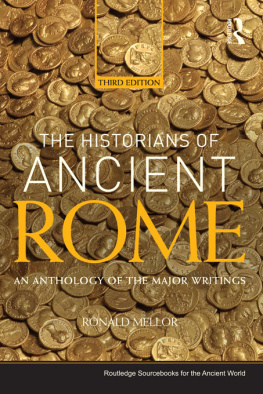India: A Rising Middle Power
Other Titles in This Series
Indira Gandhi's India: A Political System Reappraised, edited by Henry C. Hart
Southeast Asia and China: The End of Containment, Edwin W. Martin
Intra-Asian International Relations, edited by George T. Yu
Mineral Economics and Basic Industries in Asia, K. P. Wang and E. Chin
Westview Special Studies on South and Southeast Asia
India: A Rising Middle Power edited by John W. Mellor
India, one of the largest and most broadly industrialized of the rising middle powers of the Third World, has increasing influence on the outcome of the major issues of global interdependency: nuclear proliferation, natural resources control, trade relations, and population growth. Yet, the Western world generally, and the United States in particular, remains ill equipped to understand and adapt to this rapidly changing global reality. The topics in this volume were chosen for their importance to understanding the basis of India's global role.
John W. Mellor, director of the International Food Policy Research Institute, was formerly chief economist with the U.S. Agency for International Development. Dr. Mellor has lived for several years in urban and rural areas of India.
Published in cooperation with The Asia Society
India: A Rising Middle Power
edited by John W. Mellor
Foreword by Phillips Talbot
First published 1979 by Westview Press, Inc.
Published 2018 by Routledge
52 Vanderbilt Avenue, New York, NY 10017
2 Park Square, Milton Park, Abingdon, Oxon OX14 4RN
Routledge is an imprint of the Taylor & Francis Group, an informa business
Copyright 1979 Taylor & Francis
All rights reserved. No part of this book may be reprinted or reproduced or utilised in any form or by any electronic, mechanical, or other means, now known or hereafter invented, including photocopying and recording, or in any information storage or retrieval system, without permission in writing from the publishers.
Notice:
Product or corporate names may be trademarks or registered trademarks, and are used only for identification and explanation without intent to infringe.
Library of Congress Catalog Card Number: 79-50871
ISBN 13: 978-0-367-01818-4 (hbk)
Contents
, Phillips Talbot
, John W. Mellor
John W. Mellor and Philip Oldenburg
Myron Weiner
Myron Weiner
Lloyd I. Rudolph
John W. Mellor
T. N. Srinivasan
Baldev Raj Nayar
Baldev Raj Nayar
William J. Barnds
George H. Quester
Onkar Marwah
F. A. Long
Padma Desai
Hannan Ezekiel
Lawrence Veit
John P. Lewis
John P. Lewis
Uma Lele
John W. Mellor
The current language of economic and social modernization does not easily fit the circumstances of India. India is indeed a developing country, yet it stands among the dozen top industrial nations of the world and has a growing postindustrial sector. Poverty, illiteracy and health deficiencies are certainly prevalent, yet few Western nations have larger pools of trained professional, scientific, technological and executive talents. Foreign economic assistance has undoubtedly made major contributions to India's planned development, but rarely at a rate of as much as five dollars a year per capita, and usually much less. Public participation in politics has been vigorous, but issues of productivity and distribution equity have not been resolved. India is a single political entity, but developmental problems and issues in India vary from state to state and from region to region as widely as they do across the whole range of Africa and Latin America, whose total populations do not match India's.
The fact is that India is India, made sui generis by its vast size, diversity and complexity. Efforts to fit India into broad theories of the development of preindustrial countries have contributed to growing doubts about the pertinence of various development models that gained currency in the 1950s. Yet efforts to treat India without comparison to other pre-industrial or industrial nations have their own difficulties.
The Indian and Western specialists who came together for the conference which generated the papers included in this volume recognize these difficulties. From their diverse perspectives they seek to illuminate a broad spectrum of the components of India's modernizing growth: in domestic politics and international relations; in economic growth and trade; and in science and technology, including nuclear prospects and problems. As befits a conference in the United States these papers also address the changing perceptions of American social-economic-political relations with India and the virtues and pitfalls of proposals for a renewed American assistance program in India.
The portraits they paint are in some ways as diverse as the various realities of India itself. Yet they are unified in the quality of the authors' analytical skills, in their long and close experience in India, and in their shared conviction of the present and future importance of that second most populous of the world's nations.
The information, theses and arguments presented in this symposium are thought-provoking in themselves and will doubtless stimulate further discussion in both India and the United States. Toward that end, The Asia Society is pleased to facilitate this publication.
Phillips Talbot
This volume originated in the spring of 1976 when Arthur Gardiner, Jr., then Assistant Administrator for Asia of the Agency for International Development (AID), and I, then Chief Economist for the Agency, felt the need for re-examination of U.S. policy toward India and for analysis of the role renewed American foreign assistance to India could play in a context of improved Indo-American relations. We discussed whether or not the requisite paper could be written within the Agency. We quickly concluded that the issues were complex and were not likely to be dealt with adequately in an internally prepared document. It seemed equally unlikely that a single person outside the agency could be found to deal with an adequate number of issues which would have to range widely over a number of fields. We, therefore, called a meeting of half a dozen persons from the academic community for advice as to how the needed analysis could best be carried out. That meeting was held in the early fall of 1976.
In November of 1976, following the presidential election, I presumed that there would be an urgent need for an in-depth analysis of U.S.-lndian relations. In general, the new administration was likely to have a different set of policies toward the Third World, and especially toward the middle powers, such as India. Having drafted a paper delineating options for a major increase in foreign assistance earlier, it also became apparent to me that such an increase in foreign assistance to India was completely inconsistent with the United States policies and attitudes then prevalent toward India through the previous administration. A change in U.S. foreign policy toward India would, therefore, seem to be a prerequisite for any increase in assistance. Besides, India was not only important in its own right, but because of its size, absorptive capacity, and the political system was critical to any attempt to restore the overall level of United States foreign assistance to levels comparable to the other OECD (market economy, industrial) countries. Given the difficulty of the trade, commodity, and other options for improving United States-Third World relations, such restoration of foreign assistance levels would prove a key element in reducing the tension then characterizing those relations. Thus, it was with a great sense of urgency, in retrospect not fully justified by events, that I drew upon our fall discussions and arranged a set of papers on the key elements relevant to future U.S.-lndian relations. The drafts of those papers were ready by the spring of 1977.












